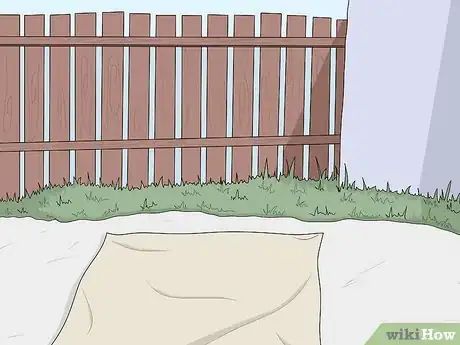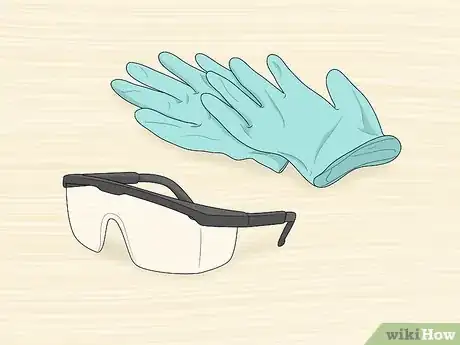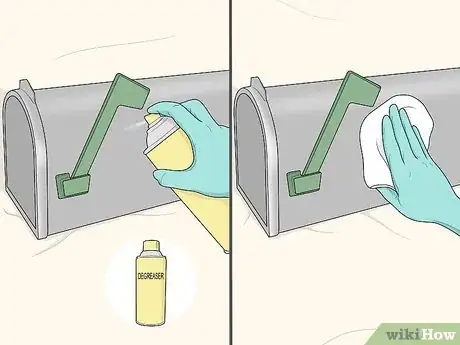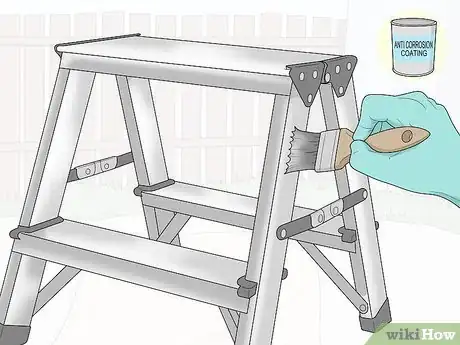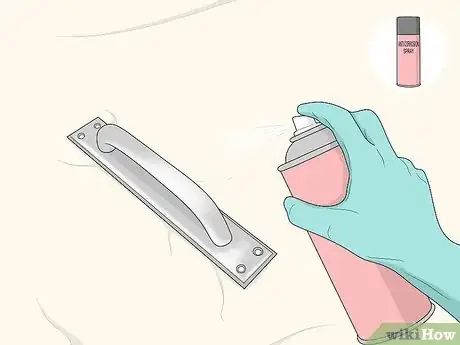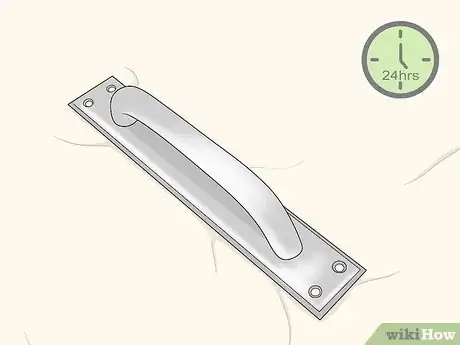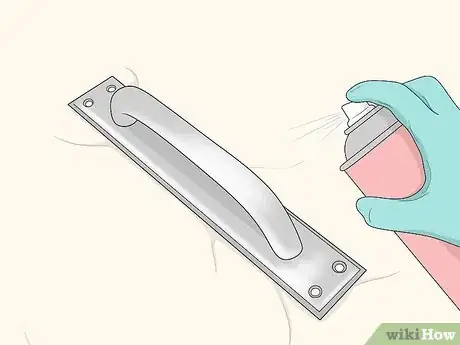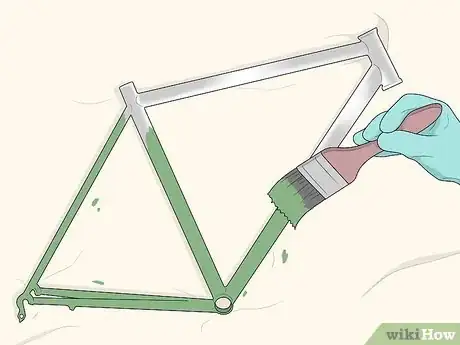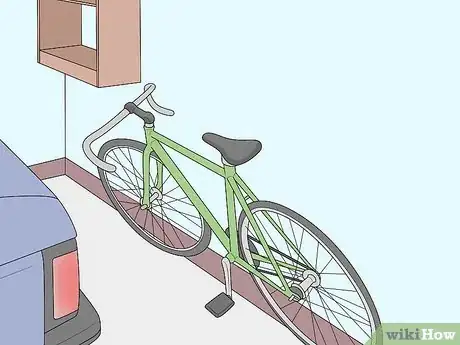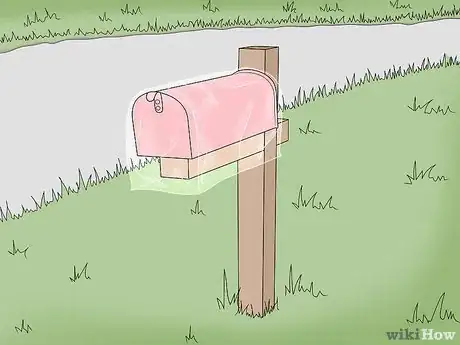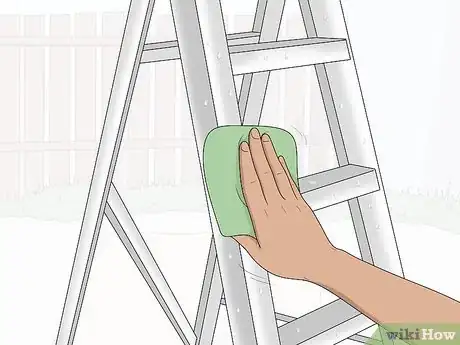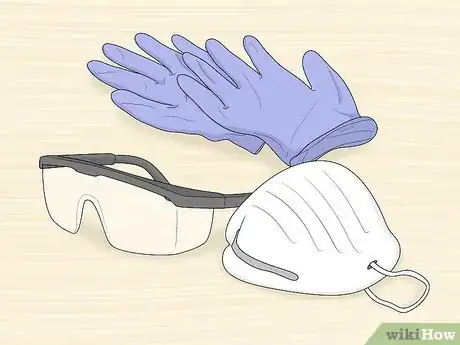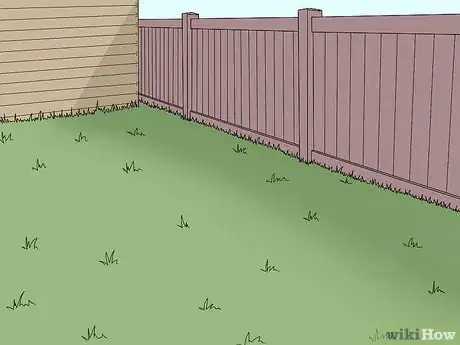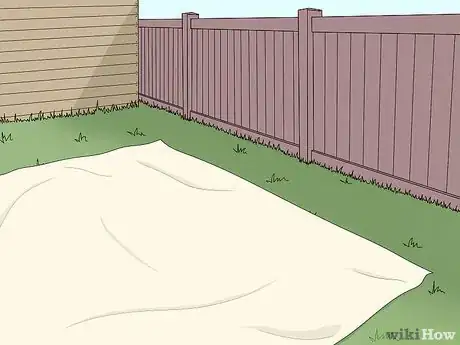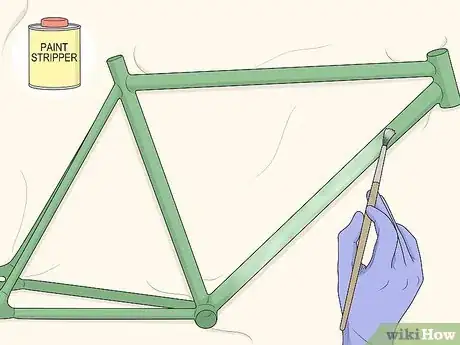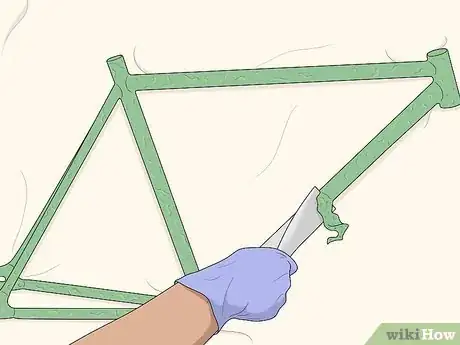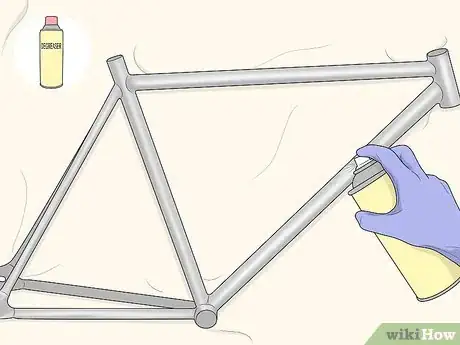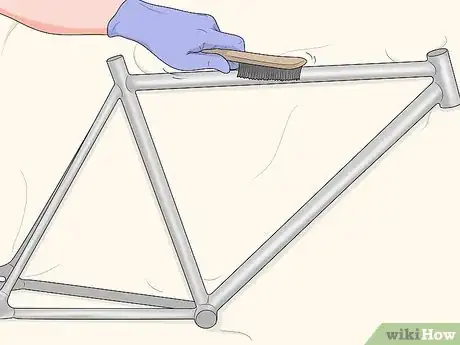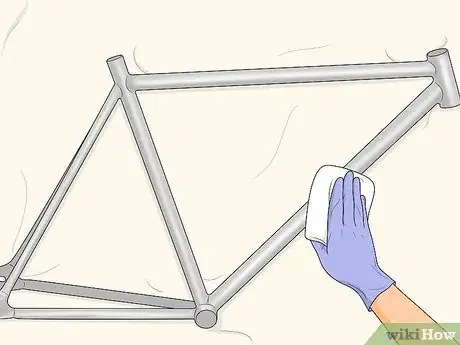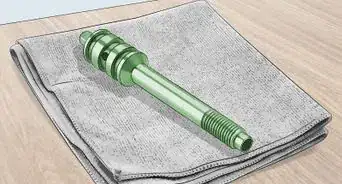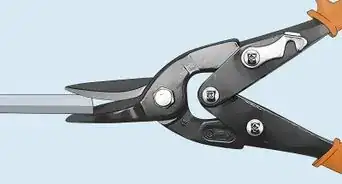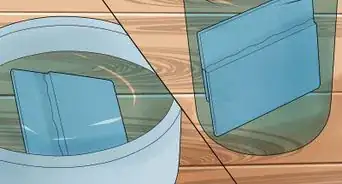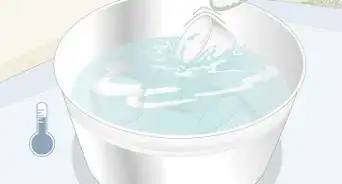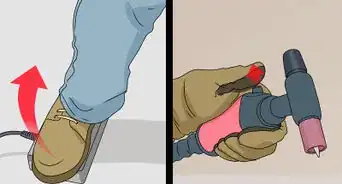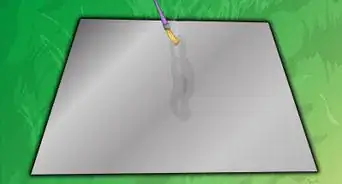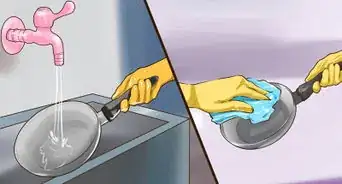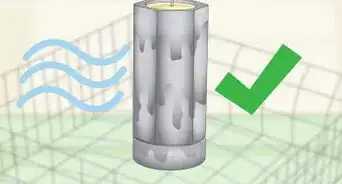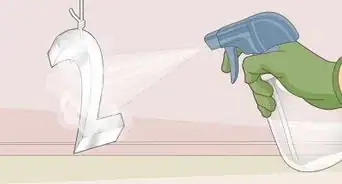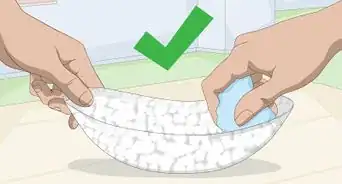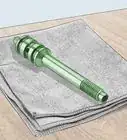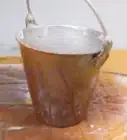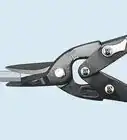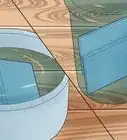X
This article was co-authored by wikiHow Staff. Our trained team of editors and researchers validate articles for accuracy and comprehensiveness. wikiHow's Content Management Team carefully monitors the work from our editorial staff to ensure that each article is backed by trusted research and meets our high quality standards.
There are 7 references cited in this article, which can be found at the bottom of the page.
This article has been viewed 17,331 times.
Learn more...
Aluminum is a strong metal that resists rusting, but over time, corrosion will start to deteriorate the metal. Luckily, you can slow or prevent this process by treating the aluminum and storing your objects properly.
Steps
Method 1
Method 1 of 3:
Protecting the Aluminum with Anti-Corrosive Coating
-
1Work outside or in a well-ventilated area. Protective paints give off fumes, so don’t work in a closed area. Either take the piece outside or open all the windows in the room you’re working in.[1]
- If you’re working indoors, you should also put down a sheet or drop cloth to prevent paint from getting on your floors.
-
2Put on gloves and goggles to protect yourself. The clear coating could irritate your skin and eyes. Protect yourself by wearing goggles and gloves whenever you’re handling the paint.[2]
- If you have sensitive skin, you should also cover any exposed skin with long sleeves and pants.
Advertisement -
3Clean the aluminum with degreaser and wipe it dry. Spray the entire piece and wipe it down with a rag until it’s dry. This should remove any dust and grease that will prevent the coating from curing.[3]
- If the piece is irregularly-shaped, like a fence, make sure you get all of the curved areas as well.
- You could also use a solvent like mineral spirits. Pour some onto a rag and wipe down the piece.
- If you use a different cleaner, always make sure it's safe for application on aluminum, or you could cause corrosion.
-
4Brush a clear, anti-corrosive coating onto the aluminum. Anti-corrosive coatings come in spray or brush-on varieties. Brushing is easier to control, and you don't have to worry about the wind making a mess like you would with spray paint. Wet a brush with the coating and spread a thin layer around the whole piece of metal. Make sure the aluminum is evenly-covered.[4]
- Anti-corrosive coating is available at hardware stores. Look for a product designed for aluminum use to avoid damaging the metal.
- Make sure to smooth the coating out if it pools in any spots. You want a smooth, even layer.
-
5Spray the coating on for a faster alternative. You could also use a spray type of anti-corrosion coating. The application will be faster than brush. It also makes coating irregular shapes, like a molded aluminum fence, much easier. Shake the can well and hold it 6 in (15 cm) away from the aluminum. Then spray in a back-and-forth motion until you've covered the whole piece.[5]
- Don't use spray paint on a windy day or it will get everywhere. Wait until the wind dies down.
- Spread out some extra protection if you use spray coating. Cover the ground with a sheet and hand newspapers or towels on any nearby structures.
-
6Let the coating cure for 24 hours. Leave the piece in a safe location where it won’t get knocked over or disturbed. Let it sit for 24 hours so the coating can fully cure.[6]
- The drying time may vary depending on the product you use. Always follow the directions that come with the coating.
-
7Apply a second coat if you live in harsh weather conditions. If you live in a very humid or salty environment, like by the ocean, then 1 coat might not be enough. Add a 2nd one and let the piece dry for another 24 hours for the best protection.[7]
- If you’re trying to protect aluminum on a boat or anything that will touch the water, then you’ll definitely need at least 2 coats. You can add a 3rd one as well.
-
8Paint the aluminum normally if you can’t find anti-corrosion coating. A layer of paint will also offer some protection against corrosion, just not as much as anti-corrosion coating. If you can’t find the right coating, then paint the piece normally. Use acrylic or latex paint designed for use on metal. Clean it with a solvent, sand it lightly, and apply 2 coats of paint to seal it from the elements.[8]
- Look for any parts where the paint starts bubbling up or chipping. This is a sign that the metal is corroding underneath.
Advertisement
Method 2
Method 2 of 3:
Storing and Covering Aluminum Objects
-
1Keep aluminum objects inside if you can. Elements like moisture and salt are the main cases of corrosion on aluminum. You can prevent corrosion by keeping aluminum indoors, away from rain and humidity. If the pieces are small enough, move them inside if you expect rain.[9]
- If you have patio furniture or a bicycle, for example, move them into the garage or shed if you have one. This protects them from the rain.
- If you live in a coastal area, then store the pieces in an air-conditioned area with less humidity.
-
2Cover outdoor aluminum objects with a plastic sheet in the rain. Some aluminum pieces, like mailboxes and fences, aren't movable and you can't store them inside. In this case, try to cover them with plastic sheets if it rains. This can protect them from getting wet and starting to corrode.[10]
- You only have to do this if the objects are in the open. A mailbox under an awning, for example, is mostly protected from rain.
-
3Wipe any rain or condensation off the aluminum to prevent corrosion. Any outdoor objects will probably get wet eventually. Check on the pieces regularly and if they have any moisture or water droplets on them, wipe them down with a dry rag. This can prevent corrosion from starting.[11]
- This is important after it rains, but also check the aluminum on humid days because condensation could build up on the metal. Wipe it down if you see any moisture.
Advertisement
Method 3
Method 3 of 3:
Removing Corrosion
-
1Put on goggles, gloves, and a dust mask to protect yourself. Stripping off corrosion creates a lot of dust and debris. Keep yourself safe by wearing gloves, goggles, and a dust mask.[12]
- If you have sensitive skin, you should also cover all your exposed skin. Wear long sleeves and pants, for example.
-
2Work outdoors or in a well-ventilated area. Aluminum particles and chemical fumes can enter the air while you work, so work outside if you can. If you can’t bring the piece outdoors, then make sure to open all the windows in the room.[13]
- You could also use a window fan to pull fumes and debris out.
-
3Spread a drop cloth underneath the work area to catch debris and paint. You’ll be scraping off corrosion and possibly paint as well, so spread a sheet or drop cloth around your work area. Otherwise, you’ll make a big mess.[14]
- This is especially important if you have to remove paint. Paint stripper is extremely corrosive and will ruin your floor and kill grass.
-
4Apply paint stripper around the corroded area if the piece is painted. If the piece is painted and corrosion is pushing through, then the corrosion might continue underneath. Dip a small paintbrush into the thinner and rub a thick layer over the corroded area. Spread it a few inches around the corrosion in every direction to reveal any other corroded spots. Let it sit for 15-20 minutes and dissolve the paint.[15]
- Paint stripper is extremely harsh, so don’t drip it anywhere or get it on your skin. You probably won’t be able to clean the paintbrush, so use an old one that you don’t mind throwing out.
- Different products may need more or less time. Follow the instructions that come with the paint stripper you use.
-
5Chip the paint off. Take a putty knife and scrape the area to peel off the remaining paint. If there are still small patches left over, use a wire brush to grind the remaining paint off.[16]
- If there is still some paint stripper left over, wipe the area with a damp rag.
-
6Clean the aluminum surface with degreaser. Degreasers usually come in a spray bottle. Spray some around the corroded area and wipe it with a clean rag until it’s dry.[17]
- You could also use a light cleanser like mineral spirits. This is a mold solvent but could still cause skin irritation, so wear gloves and wash your hands carefully when you're done. In a pinch, plain water with some dish soap suds will work.
- Make sure any cleaning product you use is safe for aluminum application. Some chemicals can cause further corrosion.
-
7Rub the corrosion off with a wire brush or sandpaper. Once the aluminum is cleaned, then you just have to scrape off the remaining corrosion. Use a wire brush or coarse-grit sandpaper. Rub the corroded parts in a circular motion until all the raised white parts come off.[18]
- If you have to clean a large area or the piece is very corroded, then you can also use a grinding wheel. Power the grinder on and press it onto the corroded areas. Rub it back and forth until all the corrosion comes off.
- Always use a mask, gloves, and goggles if you use power tools like a grinding wheel.
-
8Wipe the area down with a damp rag. Dip the rag in water and wring it out, then rub it around the area you just cleaned. This removes any leftover dust or debris.[19]
- If the metal is wet after you wipe it down, then rub it with a dry rag to soak up the water. Otherwise it could corrode again.
Advertisement
Things You’ll Need
Protecting the Aluminum with Anti-Corrosive Coating
- Goggles
- Gloves
- Dust mask
- Drop cloth
- Degreaser
- Anti-corrosive aluminum coating
- Paintbrush
Storing and Covering Aluminum Objects
- Plastic sheet
- Dry rags
Removing Corrosion
- Goggles
- Gloves
- Dust mask
- Drop cloth
- Paint stripper
- Sandpaper or wire brush
- Putty knife
- Degreaser
- Clean rags
Warnings
- Always wear gloves and goggles when you’re handling chemicals like paint stripper.⧼thumbs_response⧽
- If you get any chemicals in your eye, flush it out under cool, running water for 15 minutes. Contact poison control for further instructions.⧼thumbs_response⧽
Advertisement
References
- ↑ https://www.bobvila.com/articles/how-to-paint-aluminum/
- ↑ https://www.bobvila.com/articles/how-to-paint-aluminum/
- ↑ https://rts.i-car.com/images/pdf/upcr/cp01a.pdf
- ↑ https://rts.i-car.com/images/pdf/upcr/cp01a.pdf
- ↑ https://rts.i-car.com/images/pdf/upcr/cp01a.pdf
- ↑ https://rts.i-car.com/images/pdf/upcr/cp01a.pdf
- ↑ http://www.dviaviation.com/files/55902856.pdf
- ↑ https://youtu.be/J_3SX6_GmlM?t=98
- ↑ https://monroeengineering.com/blog/how-to-protect-aluminum-from-corrosion/
- ↑ https://youtu.be/YeFTEzeX56k?t=365
- ↑ https://youtu.be/YeFTEzeX56k?t=365
- ↑ https://rts.i-car.com/images/pdf/upcr/cp01a.pdf
- ↑ https://rts.i-car.com/images/pdf/upcr/cp01a.pdf
- ↑ https://www.bobvila.com/articles/how-to-use-paint-stripper/
- ↑ https://www.bobvila.com/articles/how-to-use-paint-stripper/
- ↑ https://www.bobvila.com/articles/how-to-use-paint-stripper/
- ↑ http://www.dviaviation.com/files/55902856.pdf
- ↑ http://www.dviaviation.com/files/55902856.pdf
- ↑ http://www.dviaviation.com/files/55902856.pdf
- ↑ https://youtu.be/YeFTEzeX56k?t=365
About This Article
Advertisement
